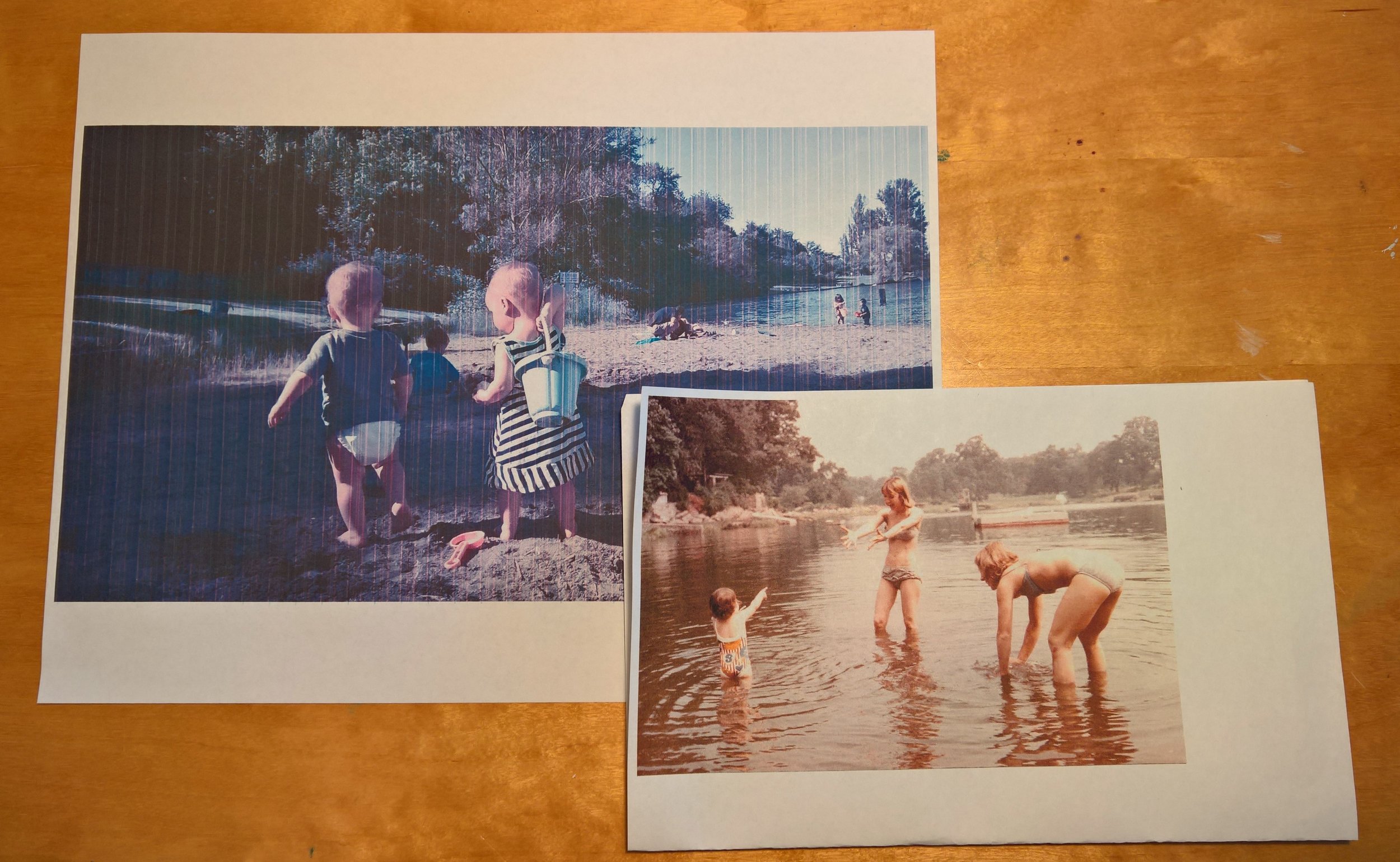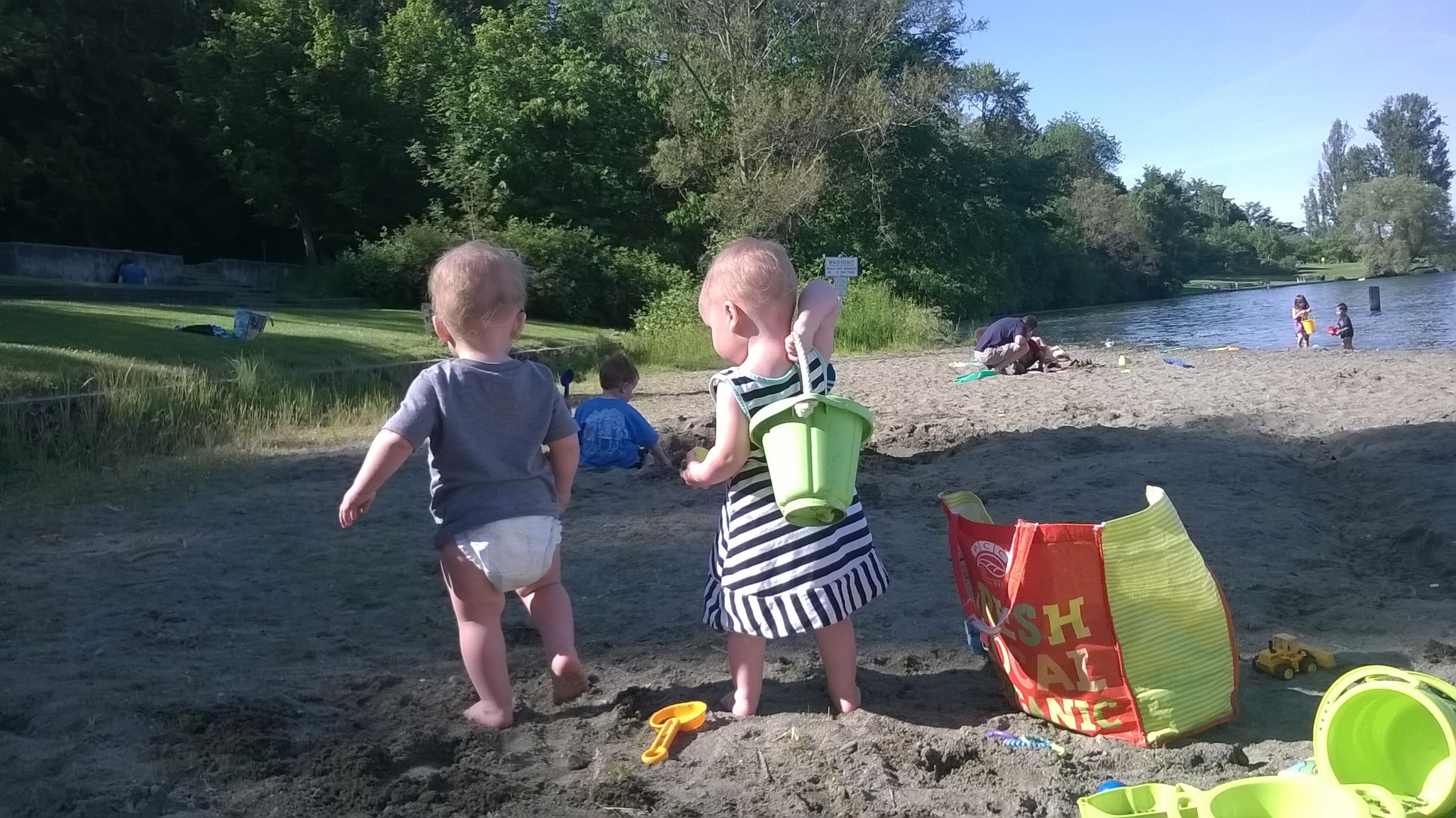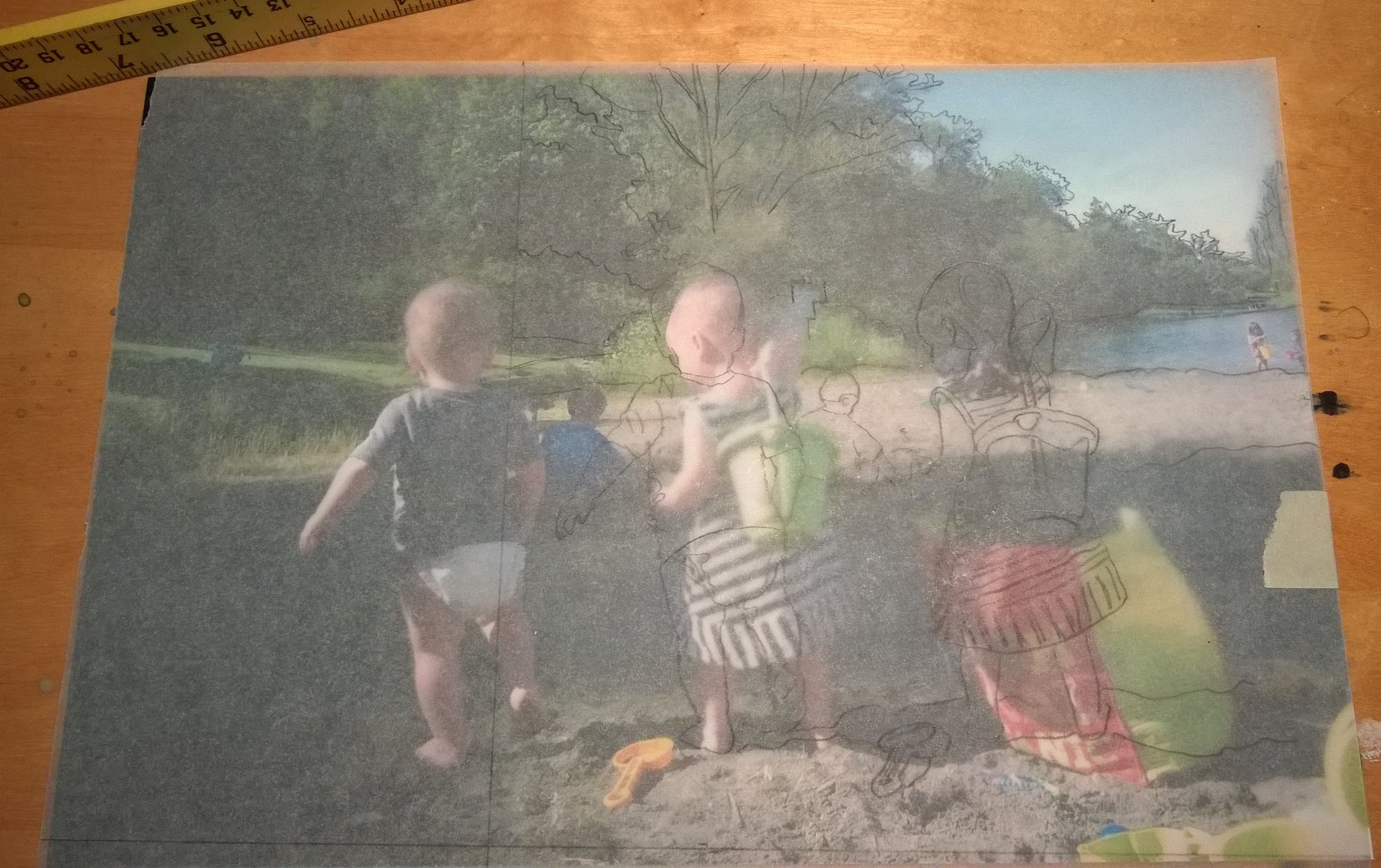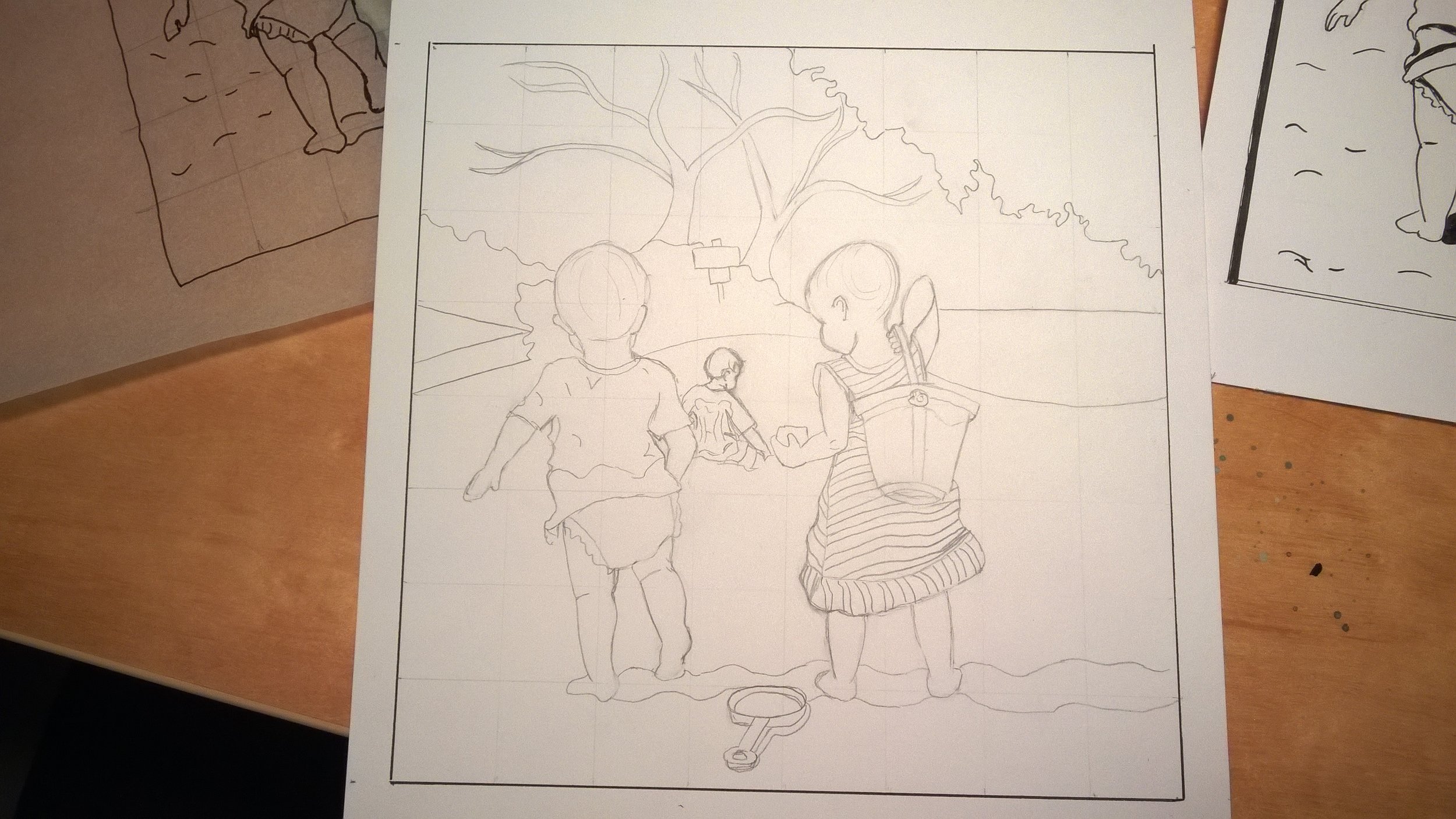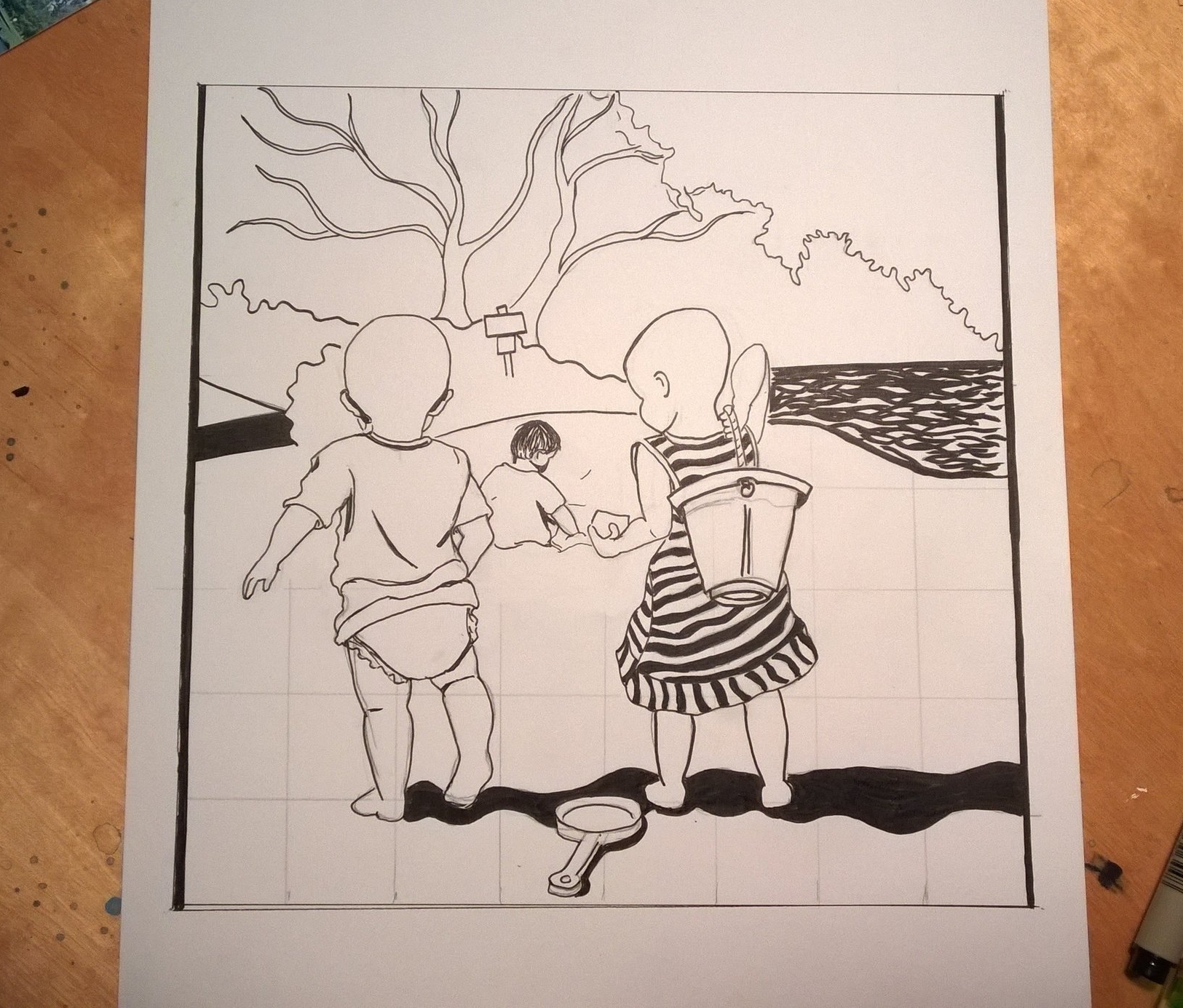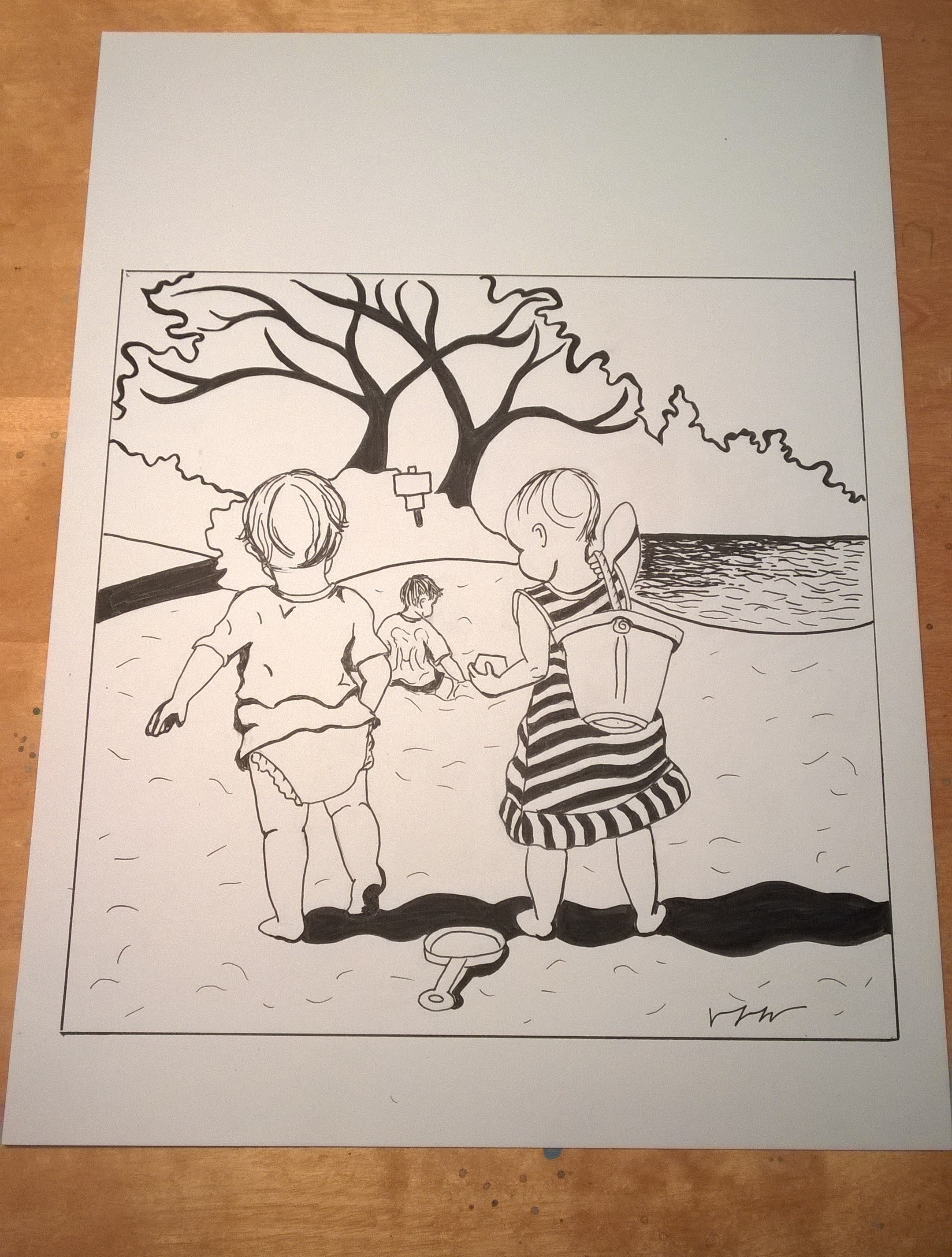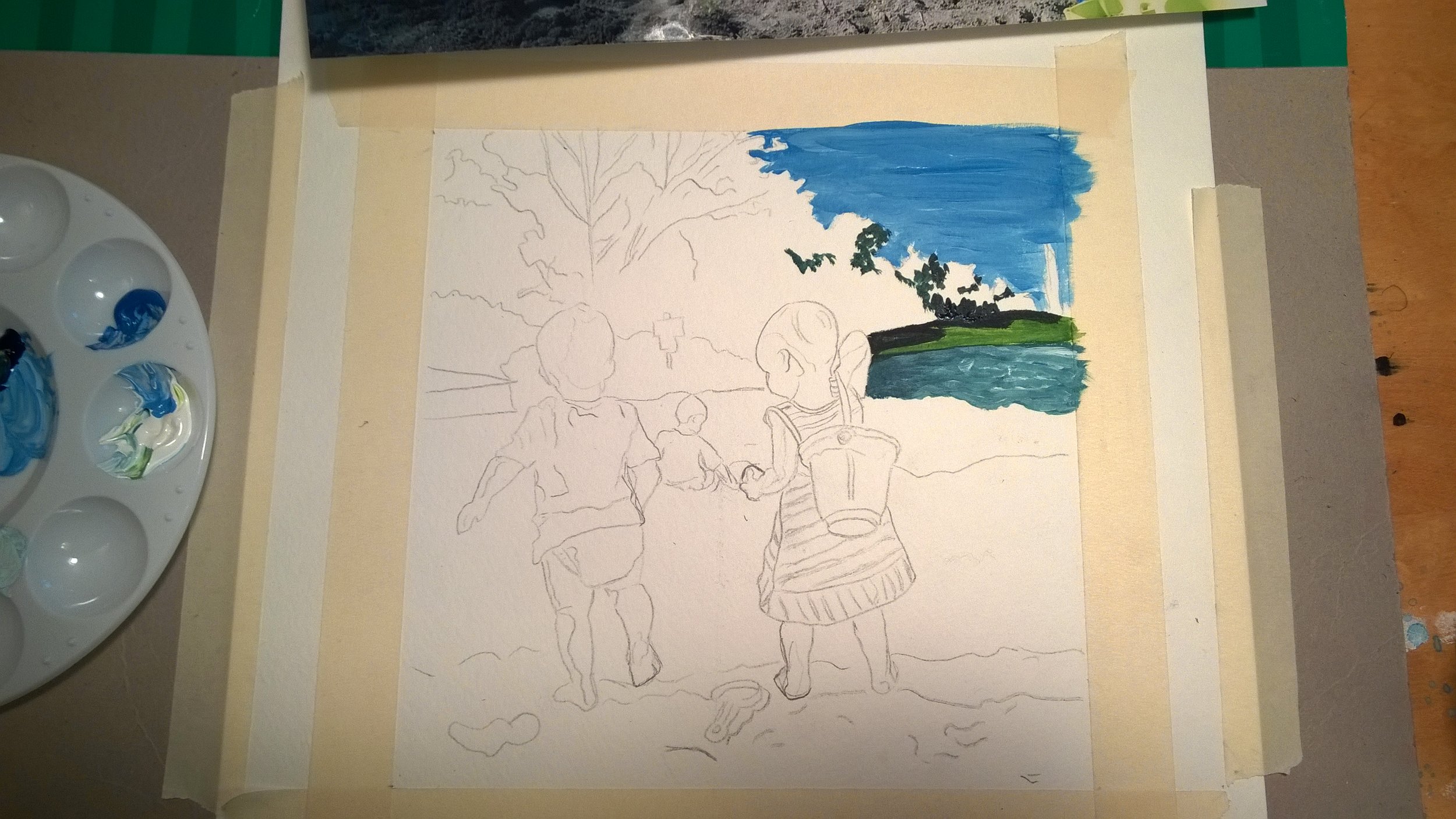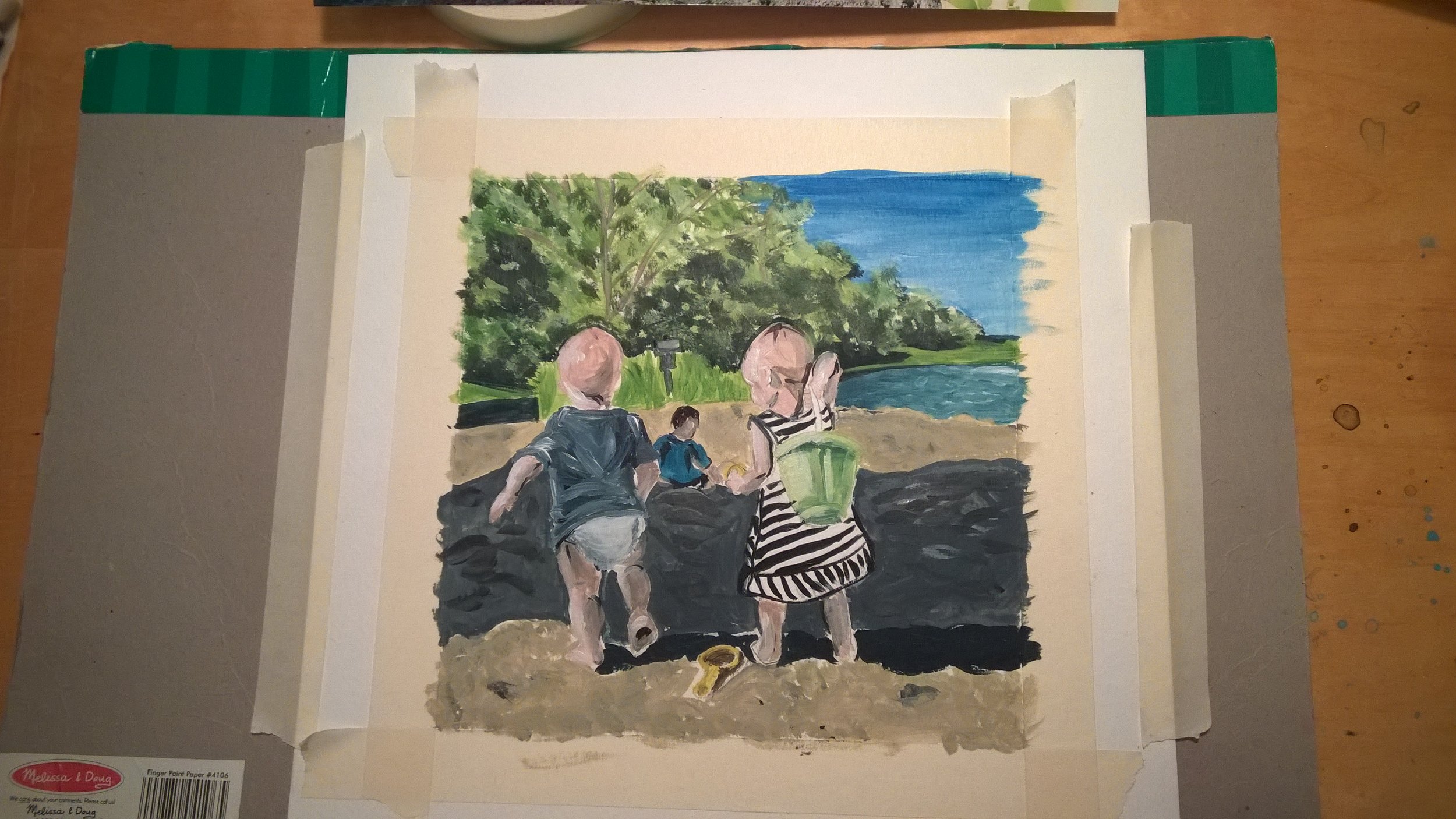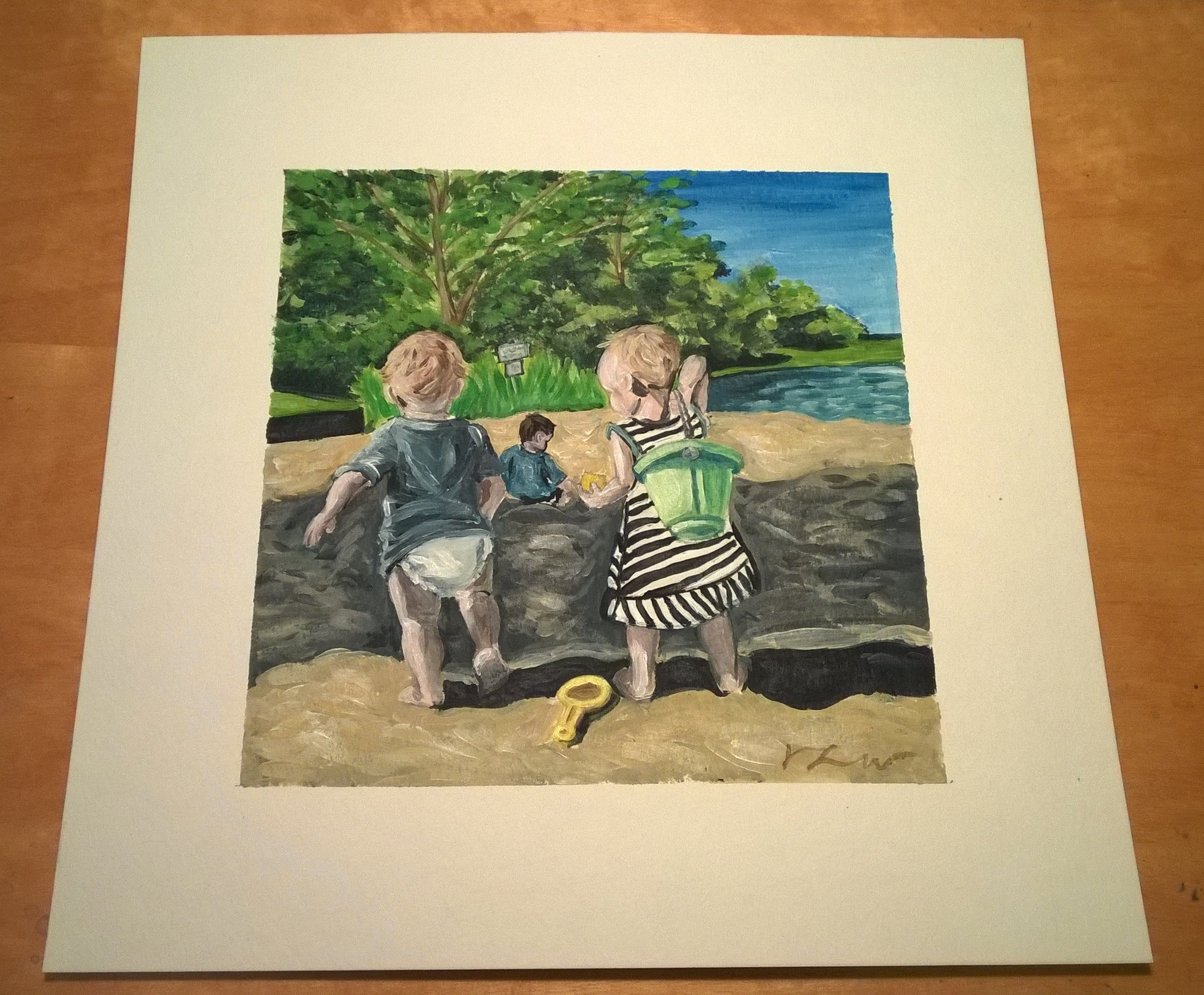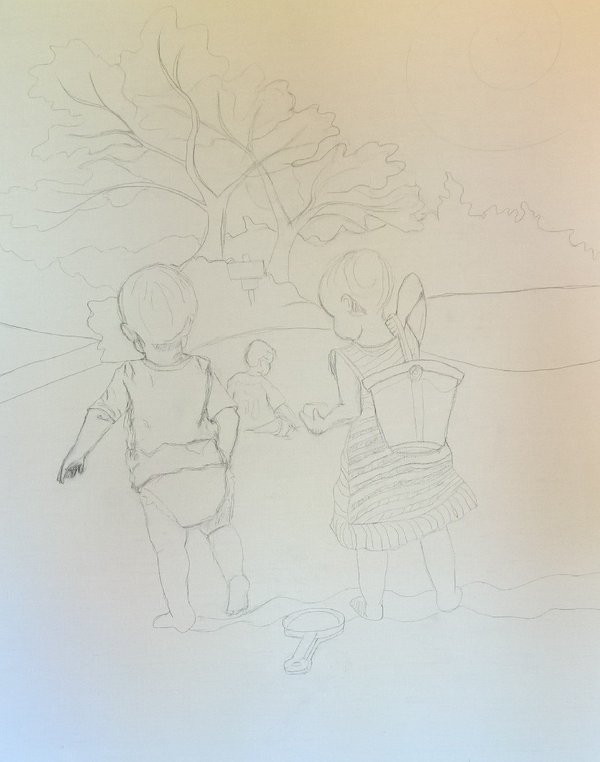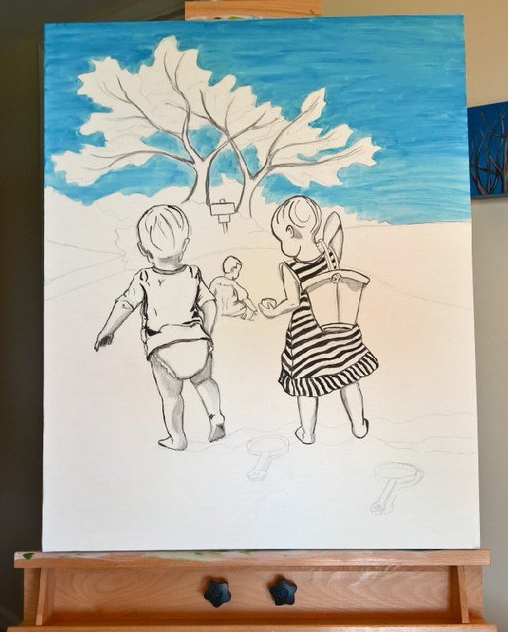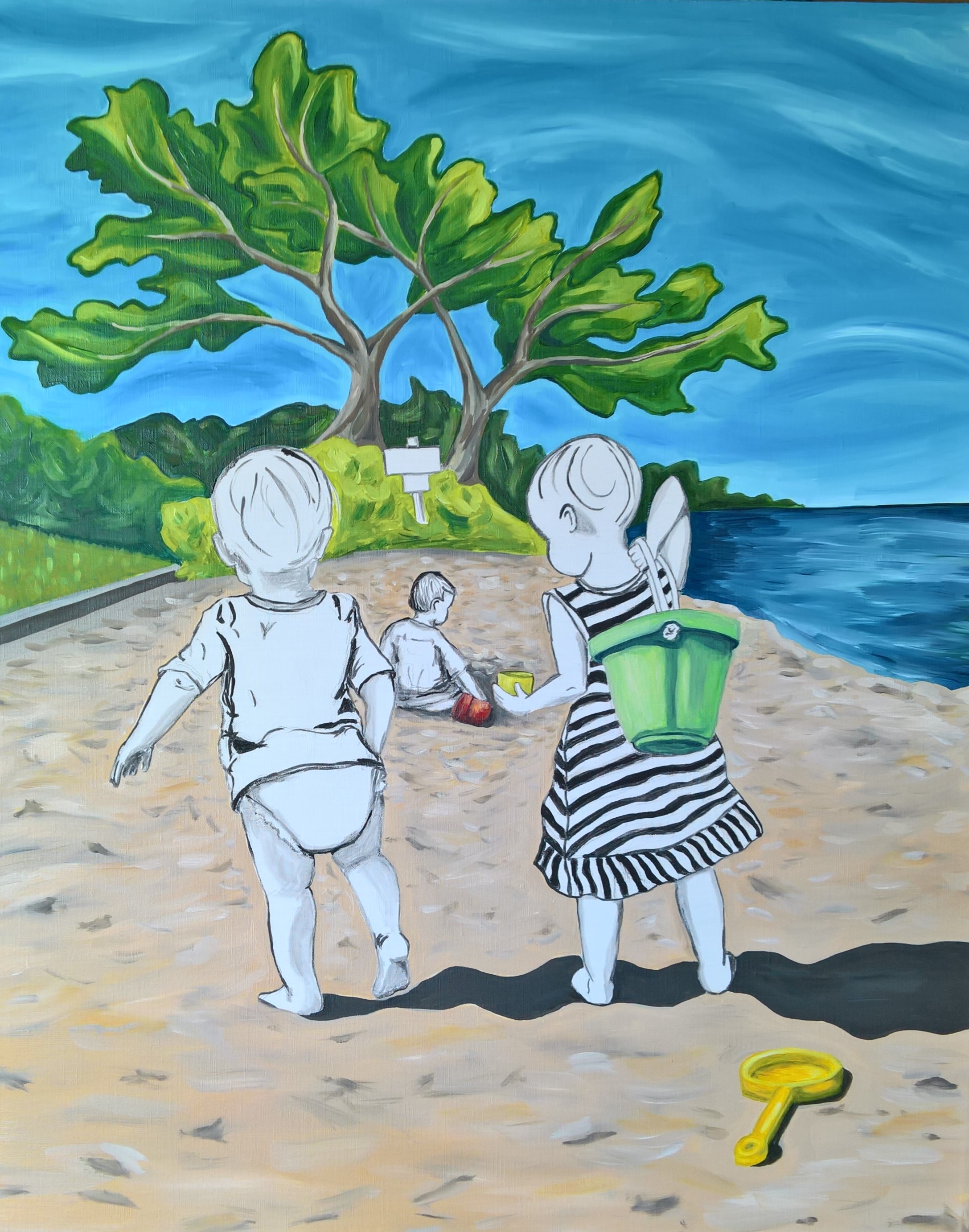I just (finally) finished a painting that I have been working on for 6 months, or two years if you count how long I have been talking about working on it, talking about not working on it, or flat out deciding against it entirely. It has been on my mind for so long, it is hard to believe it is actually complete.
Figure 1: Mt. Baker Beach 2014 (top), Tomac Cove 1973 (bottom)
Back in May, after I had sworn off the painting for good, the friend who had lent me a key piece of equipment for it – a projector – told me she was going to need it back. Faced with the idea that I wasn’t going to be ABLE to do the painting anymore, I thought, well, maybe I should just sketch out a canvas real quick. With a sudden motivation I hadn’t experienced, I started working on it.
There was one problem, I already had used the canvas I had stretched for another project. Feeling lazy (and somewhat practical, my husband lovingly suggested maybe we didn’t need yet another large painting in the house) I decided to use a canvas I had lying around. It was a rectangle which changed the proportion of the painting and immediately changed my vision for it entirely.
Side note: If you are like me and haven't stretched a canvas in while, YouTube to the rescue! I found this one particularly helpful: https://www.youtube.com/watch?v=9vrUMT3a_L8
The painting is based on a photo of my kids playing at the beach in Seattle. The photo reminded my father of a painting my mother did before I was born from a photo he took. And he suggested the project to me. In 2014 I did a couple of small studies for it that ultimately became holiday gifts for him.
For the studies, I used a grid method, like I did for the Underwater Dome painting in 2015. For the large scale version, I wanted to use a projector, which I had never done before.
Figure 2: Laptop with photo of sketch projecting on canvas. Original canvas for the project hanging on the wall behind, peeking into the photo as if to say, "I'm still in this"
To sketch, I set up the projector and looked through the pictures of my kids on the beach projected on to the canvas. Photos of the studies I had done were in the same folder and the sketch for the studies popped up when I was cycling through. I don’t know why, but it never occurred to me to create from the study sketch. The method suddenly seemed so simple and obvious: sketch from the photo, take a photo of the sketch, and then project the sketch large scale.
So, this painting came to life from the beach, to a photo, to a sketch for the study, to a photo of the sketch, to a laptop hooked up to the projector sitting on a combination of a random drawing pad, 4 CDs and a level to get the height just right. It was a little ridiculous. But then! It was like magic! And the reality of what I wanted to make began to take shape.
I had very specific plans for this painting. Stylistically, I wanted to nod to my mother’s painting but I also wanted to evoke the ink drawing study I had done. Even though I was going to use oil paint, I wanted to use very sheer layers and use the paint kind of like watercolor. The trick was going to be to get it thin enough without the oil breaking. Because the paint was going to be translucent, it meant that my sketch had to be perfect.
What this turned out to mean, process-wise, was that after the initial transfer of the sketch, the canvas sat untouched for much longer than usual. It wasn’t that I wasn’t working on it, I was. I stared at it every chance I got. I pictured it completed in my mind. I imagined what would happen with different color blocking. Doing this imagining work helped me see where the composition was imbalanced and I began to *think* about changes long before anything was even laid down in paint.
But making changes to the composition was a mental challenge because I was so attached to the real life experience and what it felt like being there that day watching my toddlers manage the beach by themselves for the first time. Changing the proportion of the painting from square to rectangle created imbalances that hadn’t been there before. For example, early on it became clear that I was going to need to move the shovel. I had a ridiculous hesitancy about doing this. It was as if I feared my kids would find the real photo years from now, see the shovel and proclaim, “My whole life is a lie!”
I had to have talks with myself about what it was I was trying to do, was I submitting the painting as evidence in a criminal court case? No. Was I making a piece of art? Yes. In the end, I chose composition over accuracy, the shovel got moved and I even added a bucket (the scandal!)
When I finally started to lay down paint, it didn’t go well. Like the 3 canvas painting from college, it was far more boring (both too look at and to create) than the studies. I had managed to strike a nice translucence without breaking the paint but the thin layer technique lacked vibrancy. I thought it would look cool but it didn't. I was pretty attached to this idea though and it was hard for me to let it go. So the painting sat and sat. And I stared and stared.
I wouldn’t exactly say that the painting was in an ugly stage, I just knew that whatever I did next was going to change the course of the painting. And there wouldn't be any turning back once I did. To get over my fear, I tried focusing on an area of the painting that I liked and letting it be the guide. As you'll probably guess, I focused on the tree. Then the sky, then my daughter’s dress, and slowly the painting became recognizably mine.
It is strange to be at the end of this project after over 2 years of intense emotion about it. I do have a sense of relief that I got it done but in the end, it became just another painting. Yes, it reminds me of my mother and her art but it also reminds me of my own journey as an artist and a mom. As much as it is a piece of art, it is also a stolen moment from our family's history. One of the first beach trips my youngest took as walkers. Seeing them with their backs turned to me, it was a milestone day. A day where they began to go off in the world and dig their own adventures. It makes me feel joy to look at. For me, that makes the painting is a success.
Now I get to move on to paint anything I want without feeling like I have an undone homework assignment hanging over me. Wonder what will come next?
